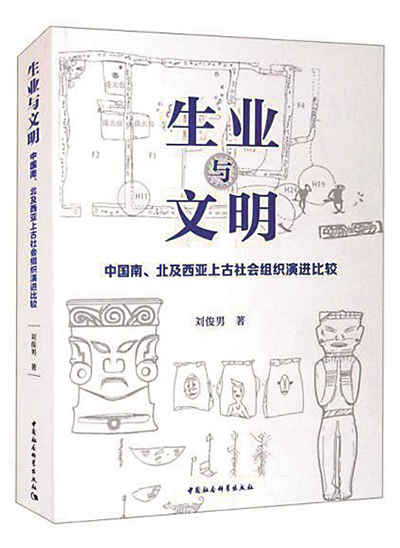Early evolution of Chinese civilization

Subsistence and Civilization: A Comparison of the Evolution of Early Ancient Social Organizations in Northern, Southern China and West Asia
Subsistence and Civilization: A Comparison of the Evolution of Early Ancient Social Organizations in Northern, Southern China and West Asia, written by Liu Junnan, a professor from the History and Social Work College at Chongqing Normal University, focuses on six major archaeological cultural areas: Jianghan [regions between the Yangtze River and the Han River], the lower reaches of Jianghuai [regions between the Yangtze River and the Huai River], Hetao and its surrounding areas, the core of the Central Plains, Haidai [regions between the Bohai Sea and Mount Tai], and the West Liao River basin.
It makes a diachronic discussion on these areas’ subsistence, clan organizations, religion and beliefs in early ancient times, and the emergence and early evolution of states, revealing the characteristics of the early subsistence and civilization of major cultural areas and the origin and evolution of states.
About 5,000 years ago, rice farming was extended to the Yellow River basin and even Gansu and other northwestern regions. Early civilizations built on rice farming displayed typical Chinese features. About 5,000 years ago in the West Liao River region, and 4,200 years ago in the lower reaches of the Yangtze and Huai rivers, civilization may have declined due to natural disasters. However, in the northwest region about 4,100 years ago, influenced by cultures from the west, the evolution of civilization accelerated, witnessing leap-frog development. The core of the Central Plains may have developed from shenbang [a hierarchical society before the emergence of states in which there was religious governance but no compulsory public power] to city-states, and then directly entered the kingdom stage of Xia (c. 21th–16th century BCE), Shang (c. 16th–11th century BCE), and Zhou (c. 11th–256 BCE) under the contention of regimes in the south and Hetao and neighboring regions.
If not considering the influence of natural disasters, the evolution of civilizations around China has generally gone through five stages, namely, shenbang in the late primitive society, then after entering the civilized society, city-states, baguo [a chieftain state commonly recognized by various tribes or communities (states) during or after the formation of states], kingdoms, and empires in turn. Each of them has its basic characteristics.
Based on previous studies, Liu proposes the concept of “baguo,” which existed in the Jianghan region for a millennium and in several other regions as well. It is not as simple as city-states and kingdoms, nor does it constitute a separate state form, but is a transitional form between states and kingdoms.
Duan Yu is a professor from the Center for Bashu Cultural Studies at Sichuan Normal University.
Edited by YANG LANLAN
